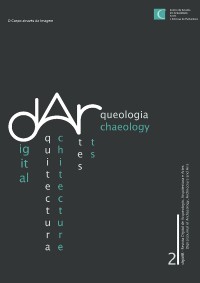Please use this identifier to cite or link to this item:
https://hdl.handle.net/10316.2/39306| Title: | Corpo e tempo: as imagens idealizadas da arte egípcia | Authors: | Sales, José das Candeias | Keywords: | Artistic conventions;concepts of time;death;eternity;Convenções artísticas;concepções de tempo;morte;eternidade | Issue Date: | 2015 | Publisher: | Centro de Estudos em Arqueologia, Artes e Ciências do Património | Abstract: | The specter of bodily degeneration, fate of all humans that reach more advanced ages, was something
heavy and terrible for the ancient Egyptians. Understandably, they longed for the elimination of those effects
and marks.
In paintings, sculptures and bas-reliefs, they almost obsessively favored youth or mature figures of men and
women. Magically explored, those figures, however, stand for another cycle of existence: the existence in the
Afterlife. They have been conceived and gain consistency by its deep connection to this dimension of the
Afterlife.
According to Egyptian understanding, in Afterlive living beings are not anymore exposed to time and its
manifestations. For them, time does not exit. Time in the Afterlife is not subjected to the change inherent to
linearity, is not mutable nor is dynamic: it is unchangeable, static and closed.
Underlying the "houses for eternity" where these representations were incorporated (mastabas, hipogeos,
funerary temples) there is, therefore, a concept of static or stationary temporality that gives them support or
justification. O espectro da degenerescência corporal, destino de todos os humanos que alcançam idades mais avançadas, era algo pesado e terrível para os antigos egípcios. Compreensivelmente, ansiavam pela anulação desses efeitos e dessas marcas. A sua preferência quase obsessiva nas pinturas, esculturas e baixos-relevos vai para as figuras da juventude ou da maturidade de homens e mulheres. Exploradas magicamente, essas figuras, estão, porém, ao serviço de um outro ciclo da existência: a existência extraterrena. Foram elaboradas e ganham consistência pela sua profunda ligação com esta dimensão do universo do Além. Segundo a concepção egípcia, os seres vivos no Além deixam de estar sujeitos ao tempo e às suas manifestações. Para eles, o tempo não existe. O tempo no Além não está sujeito à mudança inerente à linearidade, não é mutável, nem é dinâmico: é imóvel, estático e fechado. Subjacente às “moradas da eternidade” onde essas representações eram incorporadas (mastabas, hipogeus, templos funerários) há, portanto, uma concepção de temporalidade imóvel ou estacionária que lhes dá suporte ou justificação. |
URI: | https://hdl.handle.net/10316.2/39306 | ISSN: | 2182-844X (digital) | DOI: | 10.14195/2182-844X_2_11 | Rights: | open access |
| Appears in Collections: | digitAR: Revista Digital de Arqueologia, Arquitectura e Artes |
Files in This Item:
| File | Description | Size | Format | |
|---|---|---|---|---|
| corpo_e_tempo_as_imagens_idealizadas_da_arte_egipcia.pdf | 1.64 MB | Adobe PDF |  |
Items in DSpace are protected by copyright, with all rights reserved, unless otherwise indicated.
